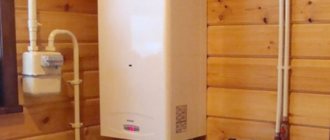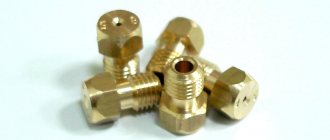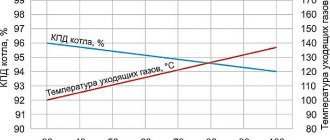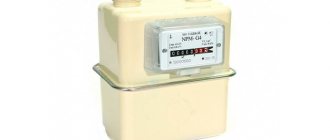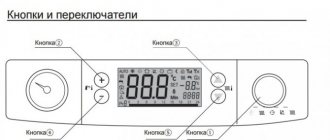A dielectric coupling is a cut-off fitting that protects the “brains” of gas-consuming devices from the destructive effects of stray currents. That is, we have before us a very useful unit, the effectiveness of which has been proven by the definition itself. However, many owners of gas stoves, water heaters and boilers, as well as employees of gas services, do not know about the existence of such an insert. And in this material we will try to eliminate this gap in knowledge by talking about the benefits of dielectric fittings, its varieties and installation methods.
Which gaskets are best to use?
Quite often, a muffler exhaust pipe flange gasket is used for replacement, which is responsible for sealing the connection between the exhaust pipe of a car exhaust system and the exhaust manifold.
This gasket is usually used on cars that have a receiving pipe mounted at two points (Volga third series, GAZ-21). However, you can make your own pant liner. It is recommended to use the following materials:
- Sheet copper;
- Asbestos;
- 2nd layer of copper.
Also, many motorists advise using automotive sealant that can withstand high temperatures. The technology for using it is quite simple: a thin layer (about one millimeter thick) is applied to the muffler in the seat, and then left to dry for twelve hours.
Most drivers prefer to use paronite to create a gasket. The creation process is as follows:
- First, a square-shaped piece of material is cut out, the old gasket is placed on it and placed on superglue.
- Then a marker is drawn along the entire contour. It is also necessary to circle all the holes located inside the product.
- The old gasket is removed, and then all the glue is removed.
- Next, the correct hole ratio is checked. If a discrepancy occurs, the product must be refined using a file.
There is an easier way:
- The surface on which the gasket will be present is cleaned and degreased;
- The gasket material is applied.
- Next, the product is hammered around the entire perimeter with a hammer.
- The gasket will gradually become visible, and the unnecessary part of the material will fall behind.
Preparing pipes for insulation
The gas pipeline fragments listed above that require additional thermal insulation can be steel or polyethylene - therefore, the most suitable materials for insulating such pipes must be selected. It is better to wrap PE pipes with elastic sheet or tape material, and metal pipes with a heating cable or place them inside a PP shell.
In any case, the gas pipeline must be prepared before insulation. The recommended air temperature for installation work is +10 °C, so it is better to postpone the event until the warm season.
The insulated surface must be thoroughly cleaned of dust, dirt, grease, and adhering street debris. We recommend using a special cleaner-diluent based on ethyl acetate. If you plan to glue the thermal insulation onto a painted surface, you should ensure that there is sufficient adhesion.
Useful tips that will come in handy during the installation of pipe insulation:
- if you plan to use insulating tees, corners, bends, get ready to fix them first, and then insulate the straight sections;
- expect that glue, if used, will have to be applied both to the surface and to the insulation, and when gluing the ends - both to the ends and about 2 cm to the inner surface of the insulation;
- stretch the insulation during installation, taking into account the linear expansion of the pipes;
- To give a holistic appearance, place all seams on the wall side.
We recommend preparing a set of tools in advance: glue brush, stationery knife, compass, scissors, punches, miter box, ruler, tape measure, marker. A spatula is useful for puttying work.
Before attaching the self-regulating cable, the steel pipe is also coated with protective paint in 2 layers and grounded.
Selection of liner and coupling
It is better to choose a bellows liner coated with a yellow insulator. It is easier for housewives to wash such eyeliner from dust and kitchen soot. At the same time, the insulator will protect against the flow of current when touching the exposed terminals of live devices or the conductive body of the device.
Of course, you could supply an inexpensive rubber hose. But rubber tends to age, lose elasticity, and microcracks appear on the rubber hose - places of gas leakage.
Dielectric couplings for gas will protect against current flow through any hose. These parts are tested for breakdown with a current frequency of 50 Hertz and a voltage of 3.75 kV for 6 seconds or more. When a voltage of one kilovolt is applied, the electrical resistance is 5 megaohms. The inserts can withstand temperature differences from -60 to +100 degrees. Insulator manufacturers guarantee a service life of at least 20 years.
By installing a dielectric coupling for gas, leaving home on business or taking a bath, the reader will be confident in the safety of his home, loved ones and neighbors. Dielectric insulator - protection against burnout of the liner, subsequent gas leakage and inevitable explosion.
A dielectric insert (or a permanent connection that prevents the spread of leakage currents. The dielectric insert also protects electronic components (for example, control units) and electrical circuits (for example, an electric ignition system, lighting) of gas-consuming equipment from the harmful effects of stray currents. The insert is installed between the gas tap and gas supply. Of course, the gas meter can also suffer from stray currents
And, importantly, the insulating insert eliminates possible heating and even sparking of the metal gas line as a result of the accumulation of electrical potential on it. There are several reasons for the occurrence of stray currents, or leakage currents. The main ones are: - Damage to the insulator on the gas main
To prevent corrosion, a small electric potential is specially applied to the steel pipes of main gas pipelines, which must be extinguished at the entrance to the apartment building or at the exit from the gas distribution unit in the immediate vicinity of the outlet to the individual house. For these purposes, a special main dielectric insert is used. In case of its destruction or absence, the electrical potential freely penetrates into the intra-house and intra-apartment gas pipelines. -Lack of electrical grounding, faulty electrical wiring and local electrical circuits. Modern gas consuming appliances (gas boilers and water heaters, stoves, ovens, etc.) are often stuffed with electronics and local electrical circuits. These include electronic control modules, electric ignition, timers, lighting systems, etc. In the absence of the necessary electrical grounding, as well as when electricity enters the metal body of the equipment due to a malfunction of local electrical circuits (the so-called ground fault), such equipment itself becomes a source of harmful currents. -Illegal grounding of electrical appliances on gas steel pipes. Often your neighbors, who have entrusted the work of connecting certain electrical appliances to “craftsmen,” are blissfully unaware of the fact that their (neighboring) electrical appliances are grounded to a gas pipe.
SPECIFICATIONS:
Connecting dimensions of the insulating
insert
: 1/2″, 3/4″; Execution option: fitting-fitting; Material of metal parts: brass CW614N according to EN12165, analogue of sanitary brass LS59-1 according to GOST 15527; Dielectric: Polyamide according to GOST 14202-69 with fire resistance category PV-0 according to GOST 28157-89; Nominal pressure PN=6 Bar (or about 6 atm). For reference: according to SNIP 2.04.08-87, in intra-house and intra-apartment gas pipelines, gas pressure up to 0.03 atm is considered normal; A conversion table for pressure units is available on our website. Electrical resistance: more than 5 MOhm at U=1000V; Operating temperature range: from -60 to +100 degrees. Celsius.
The use of an insulating insert is regulated by MOSGAZ Letter No. 01-21/425 dated December 26, 2008: “...When connecting gas stoves to a flexible connection, provide a dielectric insert.”
Dielectric insert:
Causes of leakage currents
Stray currents cause the formation of fistulas on metal tubes
Stray currents usually form underground due to impulse failures of household or factory power lines. The source of voltage in these cases is the grounding circuit, railway or tram tracks. This type of current enters the piping system due to differences in soil resistance and metal particles from the fuel supply line. As a result, the entire volume of electricity stuck in the ground does not enter it, but passes into metal elements or exposed wires. Current can be generated in the system at any time, since most domestic or public gas pipelines are made of metal.
Often the source of stray voltage is the main tube. To protect the pipeline from rust, it is charged with an electrical potential with a small force. Blocks the process of electrochemical separation of structural materials. If a gas dielectric junction is damaged in a single insulator, the good protection potential is converted into excess current. In addition, this voltage may occur due to poor grounding of circulation pumps or other parts in contact with the heating system wiring or household pipeline branch.
Gas flow dielectric can eliminate serious problems and improve the safety of everyone using gas equipment connected to the common system.
How to install the coupling - proceed carefully
Clause 6.4 of the set of rules SP 42-101-2003 indicates that the MD and VD must be installed between the gas distribution valve and the consuming appliance, therefore, when installing dielectric cut-offs, the following sequence of actions is used:
- We close the valve on the metal pipe supplying gas to the stove, boiler or column. In this case, it is better to leave the burners of the devices open so that the gas in the supply burns out.
- Holding the valve body with the first adjustable wrench, carefully twist the supply nut with the second wrench - a flexible pipeline (hose) connecting the shut-off unit to the gas inlet pipe of the boiler, stove or column. The use of a pair of keys in this case is mandatory, since the supply nut can “stick” to the fitting or branch pipe of the valve and transmit torque to it, after which gas will rush into the room, and its supply can only be shut off with a street reducer valve.
- We screw the FUM coupling (polymer seal) onto the free ends of the coupling and screw it into the gas pipeline valve by hand. Next, take the same two keys and, holding the valve body, screw in the coupling until it stops. Be careful not to overdo it at this stage, as too much force will cause the valve body to deform and cause gas to leak.
- We screw the supply nut to the device consuming gas onto the free end of the coupling, controlling our force and holding the fitting with one of the adjustable wrenches.
- Next, you need to check the tightness of the resulting connection. To do this, you need to purchase a shaving brush and, after thoroughly lathering it, treat all the joints of the valve, coupling and supply. After this, you open the valve and observe the foam at the joints. If you do not see any bubbles, the joints are sealed and your gas pipeline is ready for safe operation.
Attention: the use of matches or lighters instead of soap foam when testing the tightness of joints is strictly prohibited. You may not have time to react and turn off the gas, causing a serious fire. And if there is a strong leak, you may panic - the sight of a flaming valve unbalanced even the most cold-blooded craftsmen
Therefore, the best leak tester is soap suds.
And if there is a strong leak, you may be overwhelmed by panic - the sight of a flaming valve unbalanced even the most cold-blooded craftsmen. Therefore, the best leak tester is soap suds.
The dielectric coupling for gas ensures safety in residential areas and saves people's lives.
Equipment running on natural gas is connected to electricity sources. To prevent an accident from occurring when electric current enters the gas pipeline network, a protective insert should be installed on gas appliances.
What happens if the system does not have a shut-off fitting?
To cut off stray currents in pipelines, a special dielectric insert is used. It cuts into the area between the tap and the supply to the gas-consuming device. Or in the area between the reducer and the gas meter. What happens if there is no such insert? Believe me, nothing good. Firstly, your or your neighbor’s stove, water heater or boiler may suffer from stray current or become a source of it. As a result, there is a risk of losing their functionality due to damage to the “smart” filling, assembled on the basis of capricious chips that react even to minor voltage surges.
Secondly, a spark may occur in the pipeline - a source of fire. Moreover, cases of spontaneous combustion of the liner are not so rare. And if this fact is not discovered in time, the matter could end in a big disaster. The detonation of the gas-air mixture can destroy even an apartment building. Third, the user may receive an electric shock. If the potential of a stray charge is significant, and this happens during a thunderstorm or a power failure, then we may not be talking about an unpleasant “bite”, but about a full-fledged injury with difficult to predict consequences.
Therefore, in the set of rules SP 42-101-2003 regulating the construction of gas distribution systems, there is a special clause (6.4) stipulating the mandatory presence of a dielectric insert, used even in polyethylene pipelines. And modern industry produces several types of similar cut-off devices.
Basic rules for the safe operation of flexible gas connections
Working with central gas supply devices requires special care, because the safety and life of the residents of the house depend on the correct connection and operation. The main rule when using a bellows-type gas hose is its open installation. The hose must not be hidden or covered with pieces of furniture or household appliances: the body of the hose, as well as its connection to the gas pipe, must always be visible
The hose must not be hidden or covered with pieces of furniture or household appliances: the body of the hose, as well as its connection to the gas pipe, must always be visible.
To hide the device, it is possible to use a collapsible box, which can be easily disassembled if necessary, but it is better to leave it uncovered. If you hide the product, you may not notice the beginning of the destruction of the product, which can lead to a gas fire. It is not recommended to use paints and varnishes to decorate the hose, which may damage the integrity of the outer layer.
To connect gas equipment, you should not use a hose that is too long or, conversely, very short.
It is important to note that after gas is supplied, due to the resulting pressure, the hose may become slightly shorter, and stretching the device after installation is strictly prohibited
After connecting the stove to the gas pipe, a slight sag of the sleeve is allowed, but you need to make sure that there are no kinks or twists. To avoid this, it is recommended to observe the bending radius, which is on average equal to three times the diameter. Other important rules:
Do not allow the hose to be constantly exposed to water or steam, which will cause oxidation of the metal. It is better to place the hob slightly away from the gas pipe. If a thread of a non-standard cross-section is installed in the plate, then it is additionally permissible to use an adapter for connection. Do not carry out welding or soldering work near the gas connection. If necessary, a heat shield is laid between the soldering iron and the gas hose
Before installing the bellows, be sure to pay attention to the presence in the packaging of documentation confirming the safety of using the product. When installing, you cannot join different materials together, for example, copper and steel. Steel can only be connected to steel, and copper can only be connected to copper or brass.
Do not use great force when tightening the connections, so as not to damage or strip the threads. To ensure a tighter fit, FUM tape is used. If you lack experience and self-confidence, you should not carry out work on installing a gas hose yourself.
Steel can only be joined to steel, and copper can only be joined to copper or brass. Do not use great force when tightening the connections, so as not to damage or strip the threads. To ensure a tighter fit, FUM tape is used. If you lack experience and self-confidence, you should not carry out work on installing a gas hose yourself.
Despite the fact that hoses are guaranteed for 15 to 30 years, it is recommended to inspect the product at least once a year for cracks. Using a soap solution, check the condition of the connections. If any defects are found, the hose should be replaced.
Bellows gas supply is considered one of the types of flexible hoses that are used to connect gas devices to the central pipe. Thanks to the flexibility and large selection of hoses of various lengths, there is no need to tie the equipment to the gas riser. Despite the fact that such a hose costs several times more than its conventional counterparts, due to its high quality, safety and long service life, bellows hoses have a large number of positive reviews online.
source
Basic technical properties of sealing tape
Video
FUM tape has the following characteristics:
- Reduced friction coefficient. The fluoroplastic seal, in addition to being plastic, is slippery, which simplifies the screwing of fittings.
- Thermal stability, allowing to withstand temperatures up to 260 degrees without destruction and loss of sealing properties. In addition, fluoroplastics are very effective dielectrics.
- Strength and ductility. Seals made of this material operate stably at pressures of up to 10 MPa and are able to withstand short-term loads of up to 42 MPa, for example, those occurring during water hammer in pipeline systems. The service life of a seal made from FUM tape (fumka) is determined to be 13 years. It degrades faster when exposed to light, but this is not for our case; we just need to take this factor into account when organizing the storage of the material.
- Chemical passivity. Without being subject to destruction under the influence of acids and alkalis, which is determined by the uniform distribution of fluorine atoms over the surface of the product. To date, no solvents capable of destroying this seal have been invented. Resistant to rotting processes.
Let's look at how to use FUM tape for gas and plumbing pipes correctly in more detail.
Application of anaerobic sealant.
- The operating temperature for which the sealant is intended.
- The maximum thread diameter that can be sealed with this sealant.
- Force is required for disassembly - there are sealants with light, medium and high disassembly force. Sealants with high dismantling force are used for large thread diameters (2.5 inches or larger). Before disassembling, such a connection must be heated.
Instructions for using anaerobic sealants are given in the video below:
Anaerobic sealants are used in water supply, heating and gas pipelines. The operating temperature range usually ranges from -60º to 150° C. Sealants are resistant to aggressive environments and can be used together with non-freezing coolants.
Types of dielectric cut-off couplings and bushings
The product range of stray current cut-off devices for gas distribution systems is usually divided into two groups, which include:
Is it worth installing an ignition timing variator? HBO 2. HBO 4
- Dielectric couplings (MD) are special connectors with threaded ends, installed between the gas pipeline and the device consuming blue fuel.
- Dielectric bushings (VD) are non-conducting bushings placed in the place of dismountable mating of gas pipeline components.
For its part, the range of couplings is divided into 4 standard sizes, based on the diameters of the threaded part: ?, ?, 1, 1 ?. A similar kit allows you to cover all types of pipeline fittings used in gas pipelines, because diameters are less than ? inches and more than an inch and a quarter are not used in such systems. Moreover, the range of couplings can be divided according to the design features of this connector, highlighting 3 groups: MD thread/thread, MD thread/nut, MD nut/nut. After all, the thread of this connector can be cut both from the outside and in the middle of the end part.
Dielectric couplings are required for hoses of gas appliances
The range of dielectric bushings is divided only based on their geometric dimensions - according to the diameter of the liner. In this case, we are dealing with 11 standard sizes and diameters from 8 to 27 millimeters. At the same time, both couplings and bushings have the same strength margin. The operating pressure of this and the rest of the cut-off type is 0.6 MPa (about 6 atmospheres), and the maximum is 50 MPa (493 atmospheres). In both cases, an almost non-flammable polymer material is used as a dielectric - polyamide, which has a high resistance (about 5 million Ohms).
Many people say that it is not needed
There are several opinions about these couplings.
It is not needed because the currents are not that strong and they will not do anything to the electronics. This is not entirely true, the currents may be small, but they are extremely undesirable for control boards. I repeat AGAIN, modern two-circuit boilers have a bunch of electronics, and they can often suffer from this. This happened, for example, on BOSCH boilers. There, it was precisely from jumps and stray currents that the main board burned out, and it is very expensive.
- The outlet is grounded, so a dielectric coupling is not needed. Grounding is good, but as practice shows, it does not save so much from stray currents
- You can put a plastic gas hose or PVC pipe up to the boiler. It is possible, but as practice shows, such connections are less durable than metal ones.
- It costs expensive. This is the kind of nonsense, the most expensive one I have seen is the price of about 300 rubles. And prices start at about 95 rubles. Compared to the gas device and heating system, these are just mere pennies
Therefore, I strongly recommend that you install this device, it costs a penny, and it works effectively.
Types of dielectric cut-offs
Let's take a closer look at the types of dielectric cut-offs
.
In everyday life, two types of dielectrics are used for a gas hose or pipe: simple bushings that resemble liners, and threaded couplings. Let's look at how the inserts differ and choose the best solution for installation on our own.
Option #1 – bushings
Let’s say right away that you won’t need bushings to install a gas stove or install a water heater, since they don’t have much other purpose. The task is the same - to protect against stray currents.
But they are mounted where there are flange connections and bolts are used. To put it simply, bushings are used for electrical insulation of flange fasteners.
Dielectric inserts are made of PA-6 polyamide. They are resistant to external influences and have a long service life.
_
Exploitation
— the stage of an object’s life cycle at which its quality (working state) is implemented, maintained and restored. (GOST R 51617-2000)
Technical characteristics of gas bushings:
- elasticity and high degree of adhesion to metal elements;
- ability to withstand multiple alternating loads.
- frost resistance - can withstand low temperatures down to -60 ° C;
- petrol and oil resistance at temperatures up to +120 °C;
Products are marked by diameter in mm, for example, from M 8 to M 24. There you can also specify the height of the collar and the length of the bushings. The manufacturer indicates the diameters of suitable flanges, bolts, and washers in special tables.
Option #2 – couplings
That’s why installers often call them just that – couplings; universal insulating inserts for gas pipes are attached using the coupling method. They differ in the type of thread, diameter, material of manufacture, external design, but they still perform the same function - they cut off the currents generated on the gas pipe from the equipment.
Inserts are manufactured at the factory in accordance with GOST or TU. They are produced in special molds in an automatic way, using screw extrusion of two materials: metal for threaded pipes, insulating polymer. The polymer material meets the requirements of GOST 28157-89.
_
Material
- any ingredients, raw materials, components, parts, etc. used to manufacture the product.
The products are intended for operation at a working pressure of 0.6 MPa; the critical value is 1.2 MPa. The average operating temperature is from -20 °C to +80 °C.
On sale you can also find products with a black polyamide part, gas
belong to group 4 (flammable gases) and are marked in yellow.
It is better to purchase products from well-known brands rather than Chinese counterfeits, and choose products based on the following criteria:
- suitable technical characteristics - a resistance of at least 5 Ohms with a sharp increase in voltage to 1000 V.
- fire safety - threaded metal elements do not burn, and plastic ones do not support combustion;
- wear resistance and durability - high-quality parts are made of brass and have a 20-year service life;
_
Combustion
- an exothermic reaction that occurs under conditions of its progressive self-acceleration. (GOST 12.1.044-89)
Durability
- a characteristic (parameter) of products that determines their ability to maintain performance qualities for a given period, confirmed by the results of laboratory tests and expressed in conventional years of operation (service life). (GOST 23166-99); — housing and communal services - the property of equipment and heating networks to remain operational until the onset of a limit state with an established system of maintenance and repair. (MDS 41-6.2000)
The best place to install the coupling is between the gas tap and the flexible connection.
The connection method is threaded, and occurs by screwing the device onto the pipe. The fittings can have both external and internal threads.
_
Device
- a set of elements representing a single structure (multi-contact relay, set of transistors, board, block, cabinet, mechanism, dividing panel, etc.). The device may not have a specific functional purpose in the product. (GOST 2.701-84)
Before purchasing a dielectric, you need to check the diameter of the gas pipe, as well as select a flexible connection that is suitable in size. Therefore, do not forget to check the package, sometimes connection hoses are sold along with the equipment.
Constantly under the control of the gas service, which conducts equipment inspections annually, gas
is installed for a long time and does not require maintenance.
Dielectric insulating inserts
UDI-GAS insulating dielectric inserts are a permanent insulating connection designed to prevent leakage currents from flowing through the gas pipeline when an electrical potential occurs on the body of a neutralized electrified gas appliance (stove, boiler, boiler, etc.).
UDI-GAS dielectric inserts protect electronic parts of gas appliances and meters from failure as a result of exposure to electric current.
UDI-GAS insulating inserts protect against emergency situations associated with electric current entering the gas main as a result of malfunctions of the electrical part of gas appliances.
- Threaded metal parts are made of brass grade LS-59-1 or carbon Steel 3 with a coating that prevents corrosion and is acceptable for use in gas supply.
- Electrical insulator: yellow polyamide (in accordance with GOST 14202-69), without the addition of secondary impurities.
Dielectric / insulating insert UDI-GAS, 1/2″, fitting/fitting
- Nominal pressure: PN 0.6 MPa.
- Operating temperature: -60°C to +100°C.
- Nominal diameter: DN15.
- Inner passage diameter: 10.0mm.
- Options for threaded connection fittings: fitting/fitting.
- Pipe thread size of connecting fittings, inch: 1/2″.
- The insert can withstand a test voltage of 3750V by applying 50Hz alternating current to metal parts for at least 6 seconds.
- Electrical resistance at 1000V is more than 5Mohm.
Dielectric / insulating insert UDI-GAS, 3/4″, fitting/fitting
- Nominal pressure: PN 0.6 MPa.
- Operating temperature: -60°C to +100°C.
- Nominal diameter: DN20.
- Inner passage diameter: 14.5mm.
- Options for threaded connection fittings: fitting/fitting.
- Pipe thread size of connecting fittings, inch: 3/4″.
- The insert can withstand a test voltage of 3750V by applying 50Hz alternating current to metal parts for at least 6 seconds.
- Electrical resistance at 1000V is more than 5Mohm.
Dielectric/insulating insert UDI-GAS, 1/2″, nut/fitting
- Nominal pressure: PN 0.6 MPa.
- Operating temperature: -60°C to +100°C.
- Nominal diameter: DN15.
- Inner passage diameter: 10.0mm.
- Options for threaded connection fittings: nut/fitting.
- Pipe thread size of connecting fittings, inch: 1/2″.
- The insert can withstand a test voltage of 3750V by applying 50Hz alternating current to metal parts for at least 6 seconds.
- Electrical resistance at 1000V is more than 5Mohm.
Dielectric / insulating insert UDI-GAS, 3/4″, nut/fitting
- Nominal pressure: PN 0.6 MPa.
- Operating temperature: -60°C to +100°C.
- Nominal diameter: DN20.
- Inner passage diameter: 14.5mm.
- Options for threaded connection fittings: nut/fitting.
- Pipe thread size of connecting fittings, inch: 3/4″.
- The insert can withstand a test voltage of 3750V by applying 50Hz alternating current to metal parts for at least 6 seconds.
- Electrical resistance at 1000V is more than 5Mohm.
Typical installation diagrams Inserts using the example of a gas stove or boiler.
A dielectric insulating insert (1) must be installed between the shut-off valve (2) shutting off the gas pipeline and the flexible connection to the device (3). The insert does not require verification or maintenance during operation.
Is it necessary to insulate the gas pipeline?
It is unlikely that you have seen insulated pipes leading from gas distribution stations to residential buildings in urban areas. Typically, a gas pipeline is laid underground - and then only waterproofing is done, without insulation. Or above-ground, when pipes are also protected from atmospheric and mechanical damage, without worrying about their thermal insulation.
The documents contain minimal information on additional insulation - both in SNiP 42-01-2002 (in general about systems) and in SNiP 41-03-2003 (about thermal insulation of pipelines).
The lack of thermal insulation is explained by the properties of methane gas, which is supplied to the city slabs and water pumps. Its content in the fuel mixture reaches 70-93%, and the freezing point is -182.5 °C. This means that even when methane is diluted with other impurities, it will not freeze in the winter conditions of the northern regions of Russia.
If methane is not subject to freezing, then the propane-butane mixture, which is used to fill cylinders and gas tanks, is sensitive to lower temperatures. That is why owners of private houses have to either independently or with the help of employees of a service organization to insulate sections of the gas pipeline located on the street.
There are three critical areas that potentially require additional thermal insulation:
- a section of pipe from gas cylinders to the inlet in the wall of the house;
- a pipe from the basement entrance to the house, if gas is supplied from a gas holder;
- a section of pipe located in an unheated room - in a cold corridor, storage room, etc.
An underground gas pipeline does not require additional insulation. If it is enclosed in a special shell case made of polyurethane foam, it is for the purpose of protection from mechanical damage. The base outlet of the polyethylene pipe from the ground is placed in a case; it is also not thermally insulated.
The passage through the wall, according to the rules, is also made in a case: the pipe is enclosed in a piece of metal pipe of a larger diameter, and the voids are filled with tow mixed with bitumen. Thus, this small section of the gas pipeline is already insulated.
Whether in a particular case it is necessary to insulate a gas pipe on the street is up to the home owners to decide. If the fuel supply system operates without interruption, then thermal insulation is not needed.
The procedure for installing a dielectric on gas
Before any work on gas equipment or lines, it is necessary to turn off the tap to stop the flow of fuel and ensure safety. If the stove, heater or boiler was used before, you need to leave the burners in working order so that the remaining gas burns out.
Then we proceed in order:
If the flexible hose is already attached to the pipe, use a wrench to carefully twist the nut
Fasteners that have been installed for a long time often “stick”, so to be sure, you can use two keys. We wrap a sealant - fum tape - around the free end of the pipe and carefully tighten the connection, first by hand and then with a wrench. We screw the coupling or “barrel” as far as possible, being careful not to knock off the threads or deform the dielectric body. In the same way, screw the flexible line nut onto the other end. We diagnose the connection in a safe way.
A soap solution is used not only by users of gas equipment, but also by Gorgaz employees to check the tightness of connections. Diagnostics is simple: apply soap foam with a shaving brush or brush to the joints and observe what happens.
The appearance of bubbles, even small ones, indicates a lack of tightness - the coupling will have to be tightened. If there are no bubbles, the installation was completed correctly and you can safely use the equipment.
It is prohibited to use open flames such as matches or lighters to check for gas leaks.
Step-by-step instructions:
We remind you that you cannot use gas appliances until a gas service employee arrives. He must carry out verification, record the fact of installation of the dielectric and give permission to operate the connected equipment.
And in the future, carry out all activities related to connecting, replacing, and repairing gas equipment together with representatives of the service organization.
Preparing pipes for insulation
The gas pipeline fragments listed above that require additional thermal insulation can be steel or polyethylene - therefore, the most suitable materials for insulating such pipes must be selected. It is better to wrap PE pipes with elastic sheet or tape material, and metal pipes with a heating cable or place them inside a PP shell.
In any case, the gas pipeline must be prepared before insulation. The recommended air temperature for installation work is +10 °C, so it is better to postpone the event until the warm season.
The insulated surface must be thoroughly cleaned of dust, dirt, grease, and adhering street debris. We recommend using a special cleaner-diluent based on ethyl acetate. If you plan to glue the thermal insulation onto a painted surface, you should ensure that there is sufficient adhesion.
Useful tips that will come in handy during the installation of pipe insulation:
- if you plan to use insulating tees, corners, bends, get ready to fix them first, and then insulate the straight sections;
- expect that glue, if used, will have to be applied both to the surface and to the insulation, and when gluing the ends - both to the ends and about 2 cm to the inner surface of the insulation;
- stretch the insulation during installation, taking into account the linear expansion of the pipes;
- To give a holistic appearance, place all seams on the wall side.
We recommend preparing a set of tools in advance: glue brush, stationery knife, compass, scissors, punches, miter box, ruler, tape measure, marker. A spatula is useful for puttying work.
Before attaching the self-regulating cable, the steel pipe is also coated with protective paint in 2 layers and grounded.
Installation of gas supply
Installation of the bellows gas hose is carried out in compliance with the following rules:
- it is unacceptable to hide the liner in the wall, since any leak that is not detected as soon as possible can lead to emergencies, damage to property and loss of life;
- Do not install a hose with a large number of kinks;
- condensation on the equipment will help reduce the service life of the liner.
Installation diagram:
- choosing an installation location in accordance with the recommendations given above;
Optimal connection diagram for a gas stove
- turning off the gas supply to the premises. To make a temporary shutdown, you can use the tap installed in the apartment, and if it is missing, you need to contact the management company;
Individual gas shut-off valve
- dismantle the old eyeliner (if any);
- if the supply line and tap are missing, then before connecting the equipment, it is necessary to cut a thread on the pipe and install a tap that allows you to shut off the gas supply directly in the living room. For example, to troubleshoot equipment;
- dielectric installation;
- A flexible hose is connected to the tap. As a rule, in this situation, the “nut” connection method is used;
When connecting the liner, special attention is paid to installing the sealing gasket. A connection without a gasket will not be completely sealed. To increase the tightness, you can additionally use FUM tape or other similar material
To increase the tightness, you can additionally use FUM tape or other similar material.
- connecting the supply to gas equipment using an o-ring. All nuts and fittings must be fixed using an open-end wrench without unnecessary effort. Even slight overtightening can lead to damage to the seal and rapid depressurization;
Connecting the liner to the equipment
- examination. To identify a leak, you can use a soap solution and an ordinary brush (sponge). If soap bubbles appear on the surface when applying the solution, then the connection is not airtight.
Leak detection with soap emulsion
How to connect a gas stove yourself, watch the video.
If you cannot install the equipment yourself, it is recommended to contact gas service specialists. Replacing the eyeliner will cost approximately 300 - 500 rubles.
Hose connections
To carry out gas distribution, you can use not only pipes, but also rubber hoses. However, these must be special two-layer hoses made of vulcanized rubber
. Between their layers there should be textile reinforcement. Such hoses are used when connecting a cutter or torch to gas cylinders.
Fittings of the required diameter are used as fittings connecting gas hoses. The hose must be pulled firmly onto the fitting and secured with an aluminum clamp.
To facilitate the assembly of a gas line made using a hose, grease should be applied to them before connecting the hoses. The same substance seals the connection.
When connecting the reducer to a gas cylinder, a connection consisting of a union nut and a gasket is used. As a rule, in this case a gasket made of fluoroplastic is used. If the latter is lost or destroyed, vulcanized rubber can be used instead.
Dielectric couplings
Dielectric couplings
sells insulating couplings of its own brand STM GAZ of various configurations and diameters. All products are manufactured using modern equipment and have passed control of laboratory testing centers. The dielectric inserts (couplings) we offer comply with the requirements of Russian regulatory documents.
Purpose of the insulating coupling
A dielectric insert for gas is a non-separable fitting with threaded ends, which is an insulating obstacle to the passage of stray currents through gas pipelines. The coupling is installed in the area between the shut-off valves and consuming equipment that has electronic “filling” (boiler, meter, stove, fireplace, etc.).
The cause of stray currents can be either a grounding loop located next to the gas pipeline or the pipeline itself, which is loaded with weak electrical potential to prevent corrosion. The absence of an insulating insert in the home line can not only damage the electronics of the equipment, but also cause an accident, since the devices themselves become dangerous sources.
Dielectric coupling design
The insulating coupling is a structure of two fittings connected to each other using an insert made of non-flammable composite material - glass-filled polyamide. The non-disassembly of the coupling guarantees no gas leakage during operation.
The polyamide insulating insert is characterized by high strength and chemical inertness. For the manufacture of threaded metal parts of the coupling, LS-59-1 grade brass is used, which is not susceptible to corrosion processes.
The dielectric insert is available in two versions: there are fittings on both sides or there is a nut instead of one of them. offers insulating couplings with ¾ and ½″ connecting threads, with a nominal internal bore of 15 and 20 mm.
- All STM dielectrics are designed for operation with operating pressures up to 0.6 MPa.
- Ambient temperature – from -20 to +80 °C.
- Insulating couplings can withstand voltages up to 3.75 kV for 6 seconds.
- The electrical resistance of the polyamide insert is 5 MOhm.
Isolating couplings are required to be installed in accordance with SP 42-101-2003 “General provisions for the design of gas distribution systems” (clause 6.4).
Our offer
To purchase dielectric inserts, indicate the required quantity of the item and send a request to our managers for invoicing, indicating contact information. You can quickly place an order using our price list by downloading it on the “Prices” page. A flexible pricing system when making wholesale purchases will allow you to receive significant discounts.
We sell STM insulating couplings both in large wholesale and in small batches (worth at least 10,000 rubles). delivers goods to all regions of the Russian Federation from warehouses in Moscow, Novosibirsk and Yekaterinburg with the help of leading transport companies. You can obtain more detailed information about the technical characteristics of insulating inserts from our specialists by contacting them by phone numbers listed on the “Contacts” page.
Is it necessary to insulate the gas pipeline?
It is unlikely that you have seen insulated pipes leading from gas distribution stations to residential buildings in urban areas. Typically, a gas pipeline is laid underground - and then only waterproofing is done, without insulation. Or above-ground, when pipes are also protected from atmospheric and mechanical damage, without worrying about their thermal insulation.
The documents contain minimal information on additional insulation - both in SNiP 42-01-2002 (in general about systems) and in SNiP 41-03-2003 (about thermal insulation of pipelines).
The lack of thermal insulation is explained by the properties of methane gas, which is supplied to the city slabs and water pumps. Its content in the fuel mixture reaches 70-93%, and the freezing point is -182.5 °C. This means that even when methane is diluted with other impurities, it will not freeze in the winter conditions of the northern regions of Russia.
If methane is not subject to freezing, then the propane-butane mixture, which is used to fill cylinders and gas tanks, is sensitive to lower temperatures. That is why owners of private houses have to either independently or with the help of employees of a service organization to insulate sections of the gas pipeline located on the street.
There are three critical areas that potentially require additional thermal insulation:
- a section of pipe from gas cylinders to the inlet in the wall of the house;
- a pipe from the basement entrance to the house, if gas is supplied from a gas holder;
- a section of pipe located in an unheated room - in a cold corridor, storage room, etc.
An underground gas pipeline does not require additional insulation. If it is enclosed in a special shell case made of polyurethane foam, it is for the purpose of protection from mechanical damage. The base outlet of the polyethylene pipe from the ground is placed in a case; it is also not thermally insulated.
The passage through the wall, according to the rules, is also made in a case: the pipe is enclosed in a piece of metal pipe of a larger diameter, and the voids are filled with tow mixed with bitumen. Thus, this small section of the gas pipeline is already insulated.
Whether in a particular case it is necessary to insulate a gas pipe on the street is up to the home owners to decide. If the fuel supply system operates without interruption, then thermal insulation is not needed.






